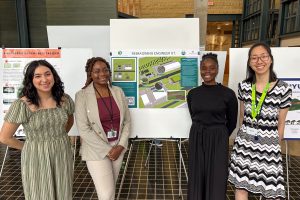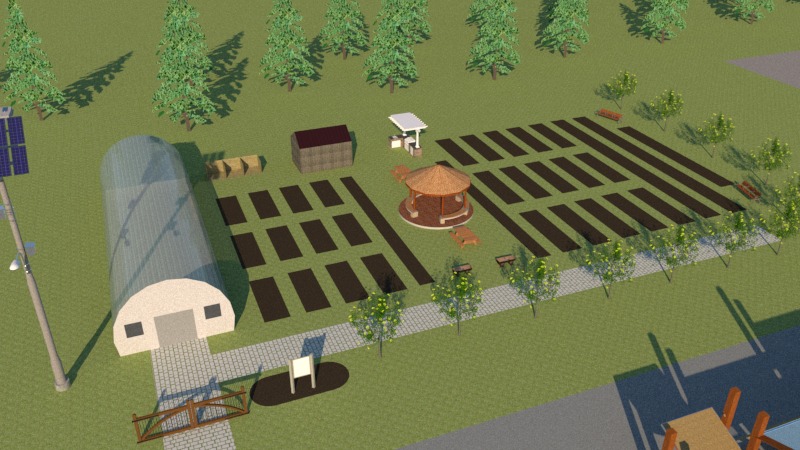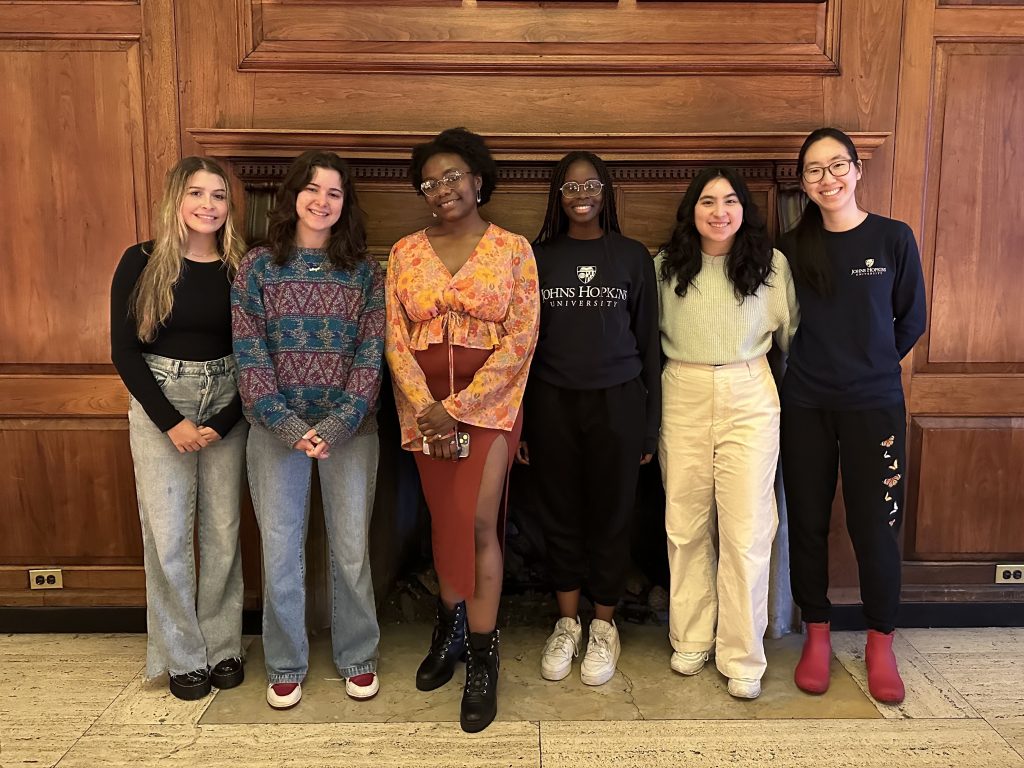
An engineering undergraduate team’s design of a green and sustainable city block placed in the top five in the finals of the 2023 American Society of Civil Engineers Sustainable Solutions Competition held at the University of Wisconsin-Platteville earlier this month. Led by Kristen Corlay Sanmiguel, a senior civil and systems engineering major at the Whiting School of Engineering, the team was the first-ever from Johns Hopkins to advance to the finals from the regional contest held in April. The purpose of the competition is to encourage students to learn more about sustainability and to challenge them to include sustainable practices in engineering design in a practical way.
The team comprised students majoring in environmental engineering, systems engineering, and electrical engineering. According to Corlay Sanmiguel, the team’s diverse range of majors allowed them to lead different aspects of the project and demonstrated that sustainability is a universal goal that applies to all fields of study.
The competition tasked participants with redesigning an imaginary downtown block, complete with a large community center and a new roadway. Competitors were asked to consider both the environment and the community, as well as the need to incorporate stormwater management systems, green infrastructure, and multimodal transportation into their designs.
“Ours had a two-story community center with a sloped green roof and a glass curtain wall with ceramic rods to deflect heat and glare, and it was made out of mass timber, a low-carbon material,” Corlay Sanmiguel says.

A rendering of the team’s community garden.
Corlay Sanmiguel says that in the first stages, team members had to figure out how to handle ambiguities in the challenge prompt, and as they progressed, also had to learn about sustainability procedures and technical processes, such as 3D rendering. They were grateful for the help provided by Alyssa Sooklal, a member of the Class of 2017 and a water resources engineer, who guided the team through advanced technical calculations. The team used Baltimore City Design Guides, alongside other real-life materials, to keep the design practical.
At the competition, each team presented its design to a panel of judges in a five-minute pitch, as if they were a design firm proposing redesign plans to a city. Coordinating all the elements needed for their presentation was challenging, says Corlay Sanmiguel.
“We had to create a 3D-model of our proposed design, a walkthrough video, a technical report justifying all our design choices, and a community outreach poster,” she says. “Engineering is so much more than making plans or designs. This was a great opportunity to also practice our business skills.”
The team members sought inspiration from local infrastructure but also set higher standards for their imaginary city on their own.
“Because we were given a lot of free rein with the design, we set our own precedents to ensure we always kept the community at the forefront,” Corlay Sanmiguel says.
To accomplish this, they included design features such as a community garden with a community kitchen to help combat food insecurity, a farmer’s market to help boost the local economy and empower entrepreneurs, expansive walkways to aid in accessibility, and a public park to promote mental and physical well-being.

Team members Gianna Murphy, Maya Mann, Ciara Darden, Adeola Ojuade, Kristen Corlay Sanmiguel, and Julia Choe.
“Even though we didn’t win first place at the championship, we learned so much, and as a leader, that was the most rewarding part. I know this experience will have a lasting impact,” Corlay Sanmiguel says. She promises that the team will return next year, and the team members are already excited for another competition.